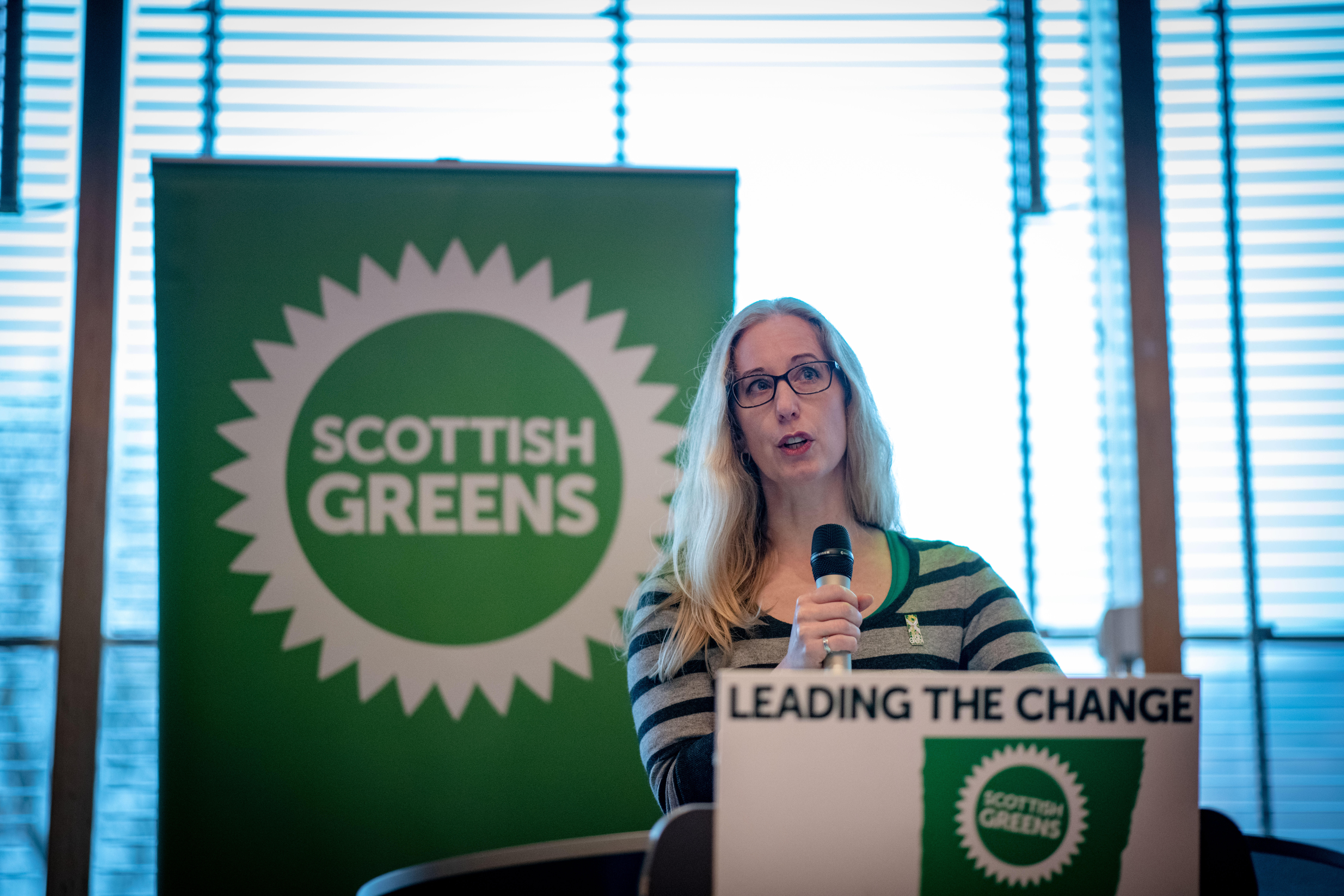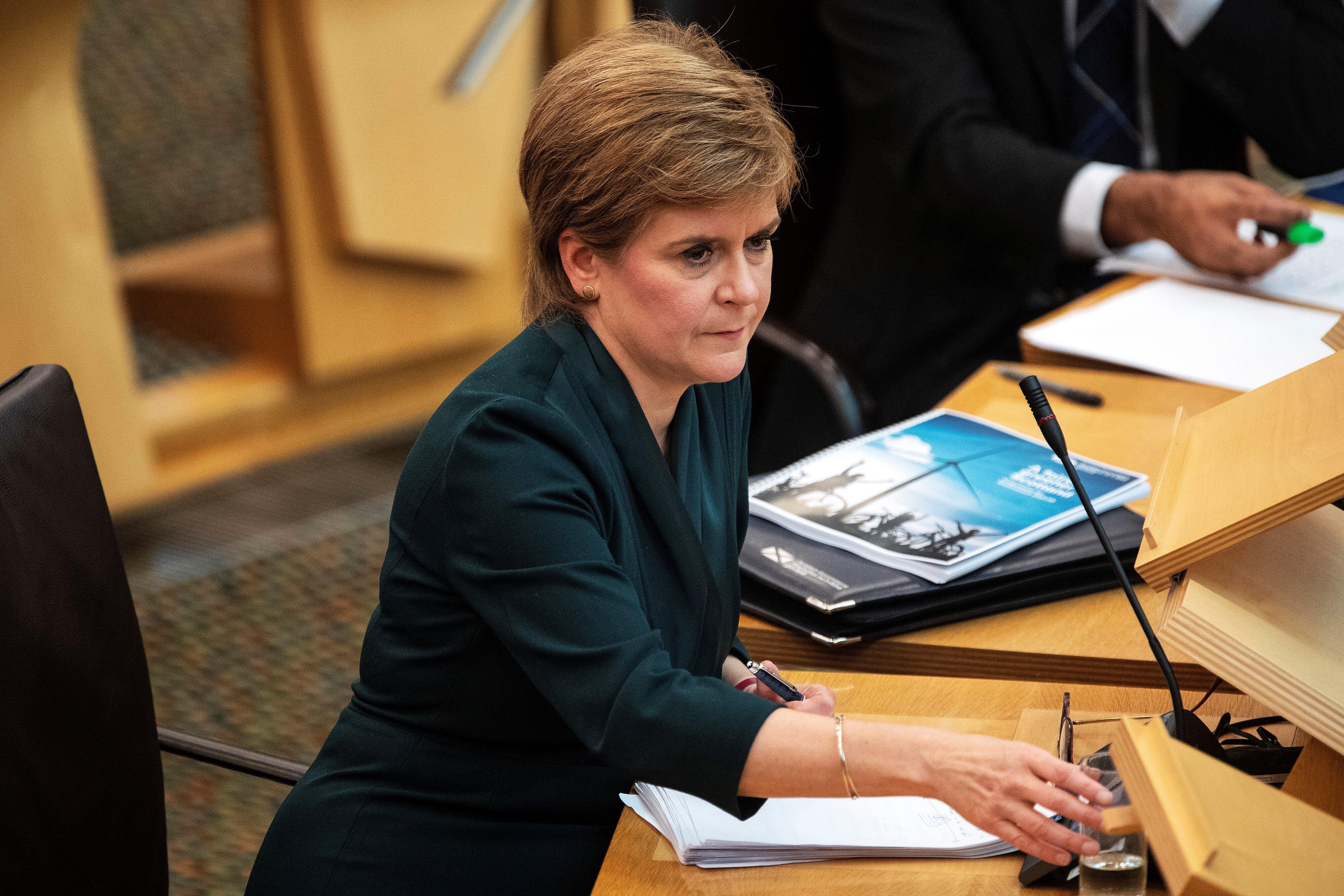Green For Go?
9 min read
The entry of the Greens into government in Scotland means independence is firmly back on the agenda – but how did devolution become a vehicle for nationalism? And what happens now? Torcuil Crichton reports.
It’s a devolution revolution. For the first time in Britain, two Green politicians are in government. Having signed on the line to give SNP leader Nicola Sturgeon an overall majority in the Scottish parliament, Lorna Slater and Patrick Harvie, co-leaders of the Scottish Greens, now swear their allegiance as ministers of the Crown.
Not that their loyalty is to Queen and country – at least not to the country which is the United Kingdom. The Scottish Greens, like the SNP government, aim for independence in the same way Richard Branson aims for space. Over the next few months and years they will try to persuade the nation they are on the cusp of success.
Adding a hint of Green to the formula has given Sturgeon what she describes as a “cemented” majority in the Scottish parliament for a second independence referendum. A bill paving the way to a legal stalemate (because constitutional legislation is outside the powers of Holyrood) will inevitably follow. The game is on: SNP grievance will be matched by a Westminster refusal which surely cannot be sustained forever.

Acknowledging this, Cabinet Office minister Michael Gove has conceded there will, in principle, be a referendum if it is the “settled will” of the Scottish people. Next question: define settled will? Alister Jack, the Scottish Secretary, just did.
Jack, a cabinet member tuned to Boris Johnson’s wavelength, said if support for a referendum, not independence, mark, is consistently at 60 per cent, then a second vote could be held. This from a Conservative government which previously held that 25 years – a generation – would be about the right timing.
However you measure a generation, devolution in Scotland and Wales is young in historic terms; barely two decades old. Yet in that short space of time, many Scots, Welsh and particularly post-millennial Generation Z in these nations have come to view politics primarily through their own parliaments and devolved leaders. It feels as if the constitutional Ferris wheel has been going round forever. Should we all be hopping on again soon?
Covid, combined with Brexit, combined with Boris Johnson, saw support for Scottish independence surge to 58 per cent in one poll last year. The pendulum has since swung back again, currently giving No a three per cent lead.
Professor James Mitchell, an expert in the SNP’s “takeover” of Scottish politics, is surprised the Yes figure isn’t higher. “Boris Johnson is a gift to the SNP, more than Margaret Thatcher was, but the SNP seems to have failed to take advantage of the situation,” he says.
Despite the slight dip, there is no sign of support for independence waning, however. So much for devolution killing nationalism “stone dead”. That pre-devolution quote, from one-time Labour shadow Scottish secretary George Robertson, sums up many of the Labour old guard’s attitude to the project: a tactic to stop the SNP.
Jack McConnell, who campaigned to establish the parliament and went on to be First Minister from 2001 to 2007 (the last Labour one) says this was not the only motivation, however. “I never had assumptions about independence or the demise of the SNP; I thought support would go up and down over the years,” he says.
Long before devolution, Scottish Labour made it anathema to identify as Scottish Tory in polite company, far less vote for one. Thus when Holyrood came along, the SNP was the opposition – and oppositions have a habit of becoming governments.
It took the SNP a while, but having learnt the trick of presenting itself as the party of Scotland and, in particular, of working class Scotland, Labour was eclipsed. Like someone going bankrupt, Labour found its support drifted away, slowly at first and then very quickly. As Anas Sarwar, Scottish Labour’s tenth leader since devolution, ceaselessly points out, the first “red wall” to collapse was in Scotland.
The party has now sunk to a once unthinkable third place behind the Scottish Conservatives, who have 31 MSPs, achieved in large part by the political wattage of Baroness [Ruth] Davidson and reinforced in May by Douglas Ross’ one-beat, pro-union messaging to a polarised electorate.
It has taken the collapse of Labour’s northern flank to see Scotland as something other than a unique tartan outlier. Instead, the permanent campaign nature of the Scottish political scene might best be viewed as a democratic testbed.
Scots have been voting, and parties campaigning, for either national and local elections or referendums in eight of the last 11 years, sometimes twice in a year. By any measure that is a super heated political atmosphere.
A decade of anger over the banking crisis, the Westminster expenses scandal, austerity and the new, shrill platform of social media found fine-tuned expression through the anti-establishment SNP.

The rest is the nearly-ran history of Alex Salmond’s 2014 referendum campaign and the 55/45 split of a bitterly divided nation in the aftermath. The deep polarisation of Scotland foreshadowed a global wave of voter resentment against establishment politics.
The 2016 year of revolutions, of Brexit and Donald Trump’s success, begs the question: what if Salmond had delayed his “date with destiny” a little longer? A student of medieval history, Salmond timed the 2014 referendum with the 700th anniversary year of the Battle of Bannockburn (Scotland 1, England 0).
One factor in the Brexit result in Scotland, only 38 per cent for Leave, could be that some of the voter rage dissipated two years earlier. The differentiation with England (where it was 53.4 per cent Leave) cannot have been entirely due to SNP efforts; the party spent more on a Holyrood by-election in Shetland than campaigning against Brexit.
Brexit, while highlighting the differences between Scottish and English attitudes, makes independence a more perilous prospect for risk-averse voters.
After oil, underwriting the SNP offer of independence has always been the bargain that Scotland would leave one big union, the UK, to join another, the EU. The circumstances are very different for Northern Ireland, but the partitioning of Britain in the Irish Sea, with a customs line across Beaufort’s Dyke, where Boris Johnson would like to put his Union Bridge, shows how Brexit would complicate Scexit.
However, Sturgeon reasoned in a recent interview with the Irish Times that if the EU border with the United Kingdom in Northern Ireland can be solved, so too could Europe’s border at Berwick. Such reasoning does not quite undermine unionist warnings about independence and border checkpoints.
The pandemic further muddies the waters. While Covid gave devolved leaders centre stage in their national response, establishing Sturgeon as the most effective down-the-lens communicator in the UK, the most recent Scottish Government Expenditure and Revenue Scotland (Gers) figures put Scotland’s public spending deficit at £36.3bn. That is more than double the £15.1bn recorded the previous year.
The Gers figures set out quite starkly the extent of the UK government support for the vaccine and furlough programmes which took the country through the pandemic, and the scale of the challenge the SNP faces persuading people to sever that “union dividend”.
Kate Forbes, the Scottish government finance minister, dismissed the figures as “no obstacle” to independence. After all, every country emerged from the pandemic with high fiscal deficits. However, Johnson regards the raw economics as his ace card.
Nimble of foot, the SNP under Salmond and now Sturgeon has found the sweet spot of being in power in Holyrood and in opposition at Westminster at the same time. It is a neat trick, as success on these terms can be measured by demand rather than delivery.
The notion that London doesn’t listen, one of the main drivers of independence, runs across the UK, not just Scotland, and the strains on the union are becoming apparent.
Work by Professor Ailsa Henderson, who runs the State of the Union survey, shows the proportion of people across the UK describing themselves as British is falling, as is belief in the idea of a United Kingdom.
She says: “It’s very much a spectrum, but if you look at those who have an ambivalent attachment to the UK and those who actually want to end the union, then you’ve got a majority in each part of the UK.”
The University of Edinburgh academic adds: “In principle, there is continued strong support for the notion of sharing resources across the state from one region to the other, but once you start mentioning specific parts of the UK, like Scotland, then support tanks.”
Closer to home the same complaints about the centre not holding can be heard across Scotland. While Sturgeon’s personal flaws are few, a litany of her government’s disasters – from rusting, unbuilt ferries to toxic hospitals – is long.
The centralisation of public services and imposition of a uniformity in civic life to create the One Scotland narrative, is perhaps the most damaging, unintended consequence of devolution.
A nationalist twist of devolution is that, 20 years on, Scotland probably has the most centralised government in Europe apart from, well, England.
In some respects Sturgeon and Johnson have more in common than they would care to admit. To the wailing and gnashing of their rivals, neither leader’s domestic failures much dent their popular appeal, and their constitutional tango suits both.
James Mitchell says: “There’s an interesting relationship between the SNP and the Tories. I think they are co-dependent and ultimately neither really wants to risk a referendum any time soon. It is displacement politics; it pushes aside the other fundamentally important issues that affect people’s lives.”
Even the fallout of the Salmond trial, in which the former First Minister was acquitted of multiple charges of sexual assault, and the Holyrood inquiry in the aftermath, left barely a scratch on Sturgeon’s reputation.
His breakaway Alba Party did not make the grade in May’s election and worked to Sturgeon’s advantage as the defection of the “fundies” – hardline pro-independence supporters – from SNP ranks saved her the task of purging internal critics from constituency posts.
But Sturgeon is still in Salmond’s sights and the Alba Party conference coincides this Autumn with the rival SNP online event. By then, a draft referendum bill will be dangled in front of SNP supporters and the Ferris wheel will light up again.
Even with that fracture, having a bedrock of voting support willing to overlook the failures of the party in government is a huge in-built electoral head start for the SNP.
At each election cycle, either under first-past-the post or PR, few see the dominance of the SNP being significantly weakened.
Nor does anyone see Johnson conceding anything in terms of a referendum.
The Section 30 order, which would grant referendum powers, has in any case to be signed by secretary of state Jack. And it seems inevitable “Mr 60 per cent” would simply refuse.
